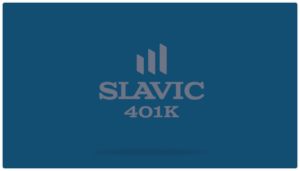Changing your job can be an exhilarating milestone. New opportunities, a higher salary, better benefits, and other perks often come with this transition– but what do you do with your 401(k) plan?
While a new career door has opened, it’s important to evaluate the options with your 401(k) as you are closing the door with your previous employer. Here’s what you need to know.
Important Steps to Take Before Your Last Day on the Job
As you prepare to transition to your new job, don’t forget to tie up some loose ends related to your retirement accounts. Here’s a handy checklist to keep you on track:
- Gather Login Information and Contacts: Ensure you have all the necessary login details and contact information for your retirement accounts. This will make managing your accounts much easier after you leave.
- Check for an Exit Packet: Reach out to your HR department and ask if they provide an exit packet that includes information about your retirement accounts. This packet can be a goldmine of useful details.
- Note Your Vested Amount: Make a note of the vested amount in your retirement accounts. Knowing this will be incredibly useful when deciding what to do with your savings.
- 401(k) Loan Alert: If you took out a 401(k) loan during your time with the company, pay close attention! When you leave your job, you may have to repay the loan in full within a short period. Check your company’s policies to see what applies to you. If you can’t repay the loan, be prepared to owe taxes and a 10% penalty on the outstanding amount if you’re under 59½.
Leave Your 401(k) with Your Former Employer
Depending on your former employer’s policy, you may be able to leave your existing funds in their sponsored account. Employers typically need a minimum balance for this option, so check with your HR team or payroll specialist before deciding.
Leaving your 401(k) in your previous employer’s plan can be beneficial if your new job has a waiting period before you can enroll in their retirement plan. This gives you more time to plan for a potential rollover. But don’t forget about your 401(k) account! Each job switch might land you a new 401(k), and without rolling over the old ones into a new employer’s plan or an IRA, it’s easy to lose track of them.
Move Your 401(k) to Your New Employer
If your new job offers a retirement plan, consider a plan-to-plan rollover. This allows you to transfer your existing retirement funds from your former employer directly into your new account without tax consequences or penalties. Check with your new HR team to ensure you follow the correct process.
Avoid withdrawing a lump sum to deposit into your new account, as this could result in taxes on the withdrawn amount. Instead, opt for a direct rollover to avoid any immediate tax implications.
Rollover Into an IRA
A rollover IRA is an IRA that allows you to transfer funds from your former employer-sponsored retirement plan into the account. You may establish the IRA with us, or another financial institution. You can choose to invest in stocks, bonds, real estate, mutual funds, and much more – it’s ultimately your decision! Plus, you avoid tax penalties associated with total withdrawals.
Types of Rollovers:
- Direct Rollover – Your retirement plan directly pays distributions into another retirement plan or IRA.
- Trustee-to-Trustee Transfer – Your financial institution can transfer funds from your existing IRA directly to another IRA or retirement plan.
- 60-Day Rollover – You receive the distribution and must deposit it into a new IRA or retirement plan within 60 days.
For more details on rollover options, visit the Internal Revenue Service (IRS).
One downside to this method is that by moving your funds into a personal IRA, your automatic contributions and savings momentum will pause temporarily between jobs. You can still choose to make payments into your IRA, but it is always wise to discuss your strategy with a financial advisor. Together, they can help you explore various options and develop a plan to maximize your savings over time. As a member or customer at your financial institution, these services are typically free.
Cash Out Your 401(k)
Suppose you liquidate an account before the minimum distribution age (typically 59 ½ years old). In that case you will face hefty tax and early withdrawal penalties. Because of this, you will be unnecessarily draining your retirement accounts, so most financial advisors will strongly caution against this.
If you’re retired or have reached the minimum distribution age, you may qualify to withdrawal without penalties. Accountholders that are age 59 ½ and older can take money out of their retirement accounts without the 10% tax penalty. However, suppose you retire or change careers earlier than age 59 ½. In that case, you will have a tax penalty for any withdrawals you make. Once you reach age 72, you will be required to begin account withdrawals. To learn precisely how much you should be taking out during each distribution period, look at the worksheet provided by the IRS or use our retirement planner calculator.
Final Thoughts
When it comes to deciding what to do with an old 401(k), there may be factors that could be unique to your situation. That means the best choice will be different for everyone. One thing to remember is that the rules among retirement plans vary, so it’s essential to find out the rules your former employer has and the rules at your new job. If you currently have an account with Slavic401k, you can review questions related to withdrawals and fees here, but if you have an account with another financial institution, you will want to contact them directly.
Deciding what you do with your 401(k) money is a major decision, with several options to choose from. No matter what you choose, we are here to support you along the way. If you find it confusing or overwhelming, contact us and we can help answer questions you may have about the rollover process.




